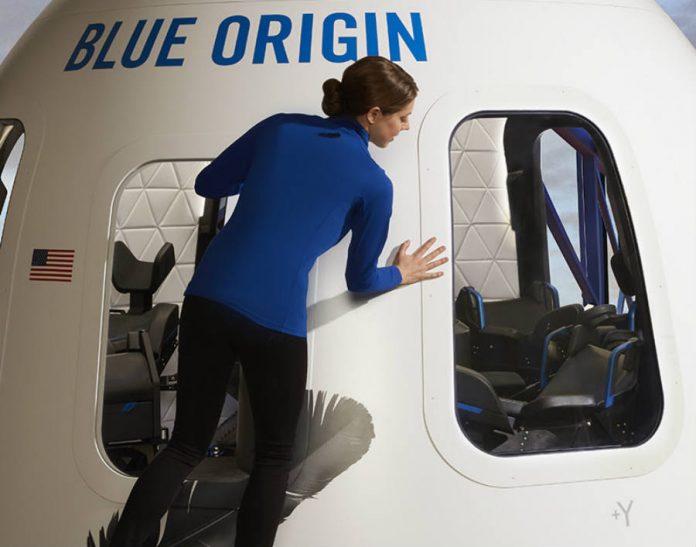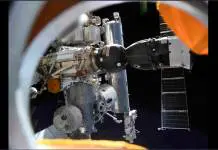
Blue Origin released new pictures of the New Shepard capsule on Wednesday, detailing the seats, windows, and more. Space tourists could ride the pod as soon as next year in 10-minute trips onboard the New Glenn rocket.
Amazon CEO Jeff Bezos also leads the company aiming to tackle a new market for people who want to go experience what space is like without going through the hurdles of becoming an astronaut.
Other firms like SpaceX and Virgin Galactic also plan to launch tourists into orbit in the near future. Elon Musk said two thrill-seekers have already paid for a journey to the Moon scheduled for late 2018 onboard a Dragon 2 capsule.
How do the New Shepard capsules look?

The private space venture says the New Shepard has the biggest windows in any spacecraft. They are 42.7 inches tall, so each passenger will have a great view of space and Earth.
There are six seats in total inside the pod, which will detach from the New Glenn rocket once it reaches low-Earth orbit. The upholstery of each seat will be made of black and blue leather, and they will bear the company’s logo.
Seats will be arranged in a circle around the capsule’s engine, designed to serve as a backup source of energy in case of emergencies.
As a whole, the capsule is 530 square feet. The New Shepard was named after Alan Shepard, the first American in space. The legendary astronaut habited a capsule ten times tinier than Blue Origins’ when he achieved the historic feat.
How much is a ticket to Earth’s orbit?
Ars Technica estimates tickets to ride the New Shepard will range between $100,000 and $200,000. The reason why these tickets are so relatively cheap is the New Glenn rocket was designed to be reusable.
The spacecraft is able to launch and land back multiple times if Blue Origin trials are any testament. Passengers will experience forces of 3 and 4Gs while they are going up, passengers might have to withstand 5G forces during the return.
Aspiring travelers and thrill-seekers will most likely have to undergo some kind of training prior to the journey. Moreover, the company has not launched a manned test flight yet, and the time is getting tight for its 2018 schedule.
Source: Ars Technica











